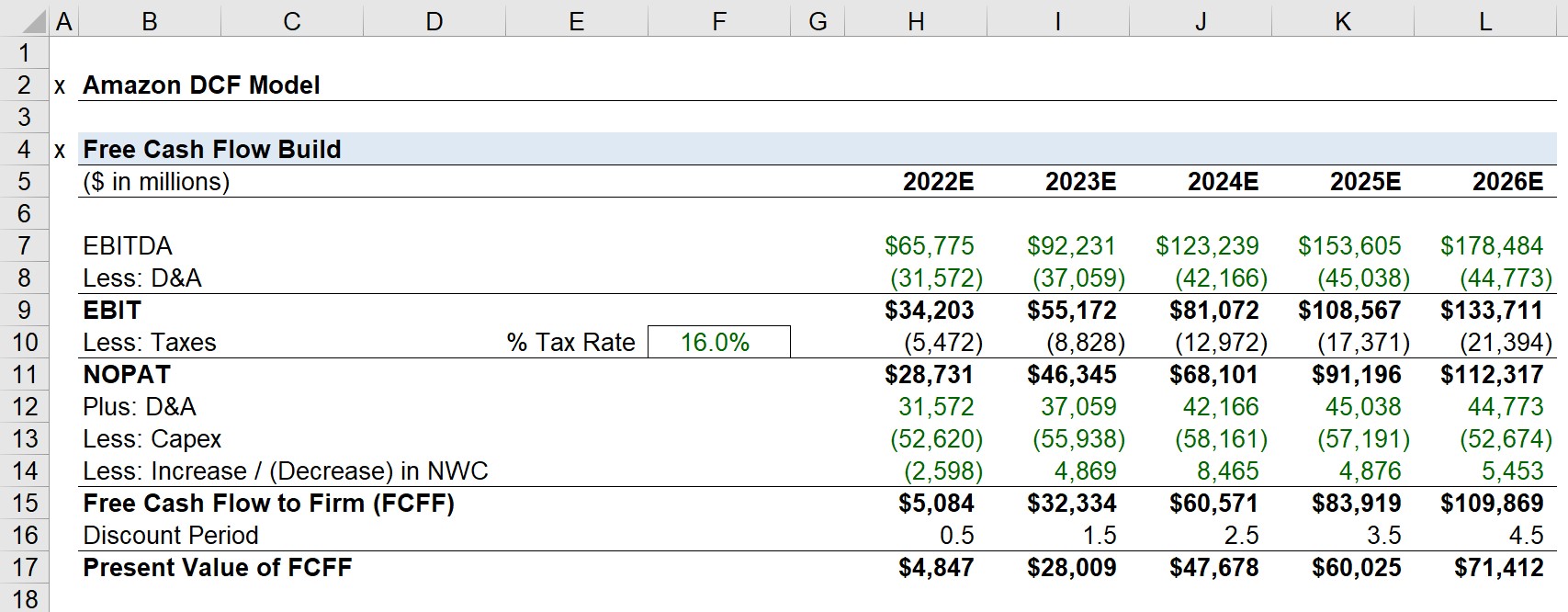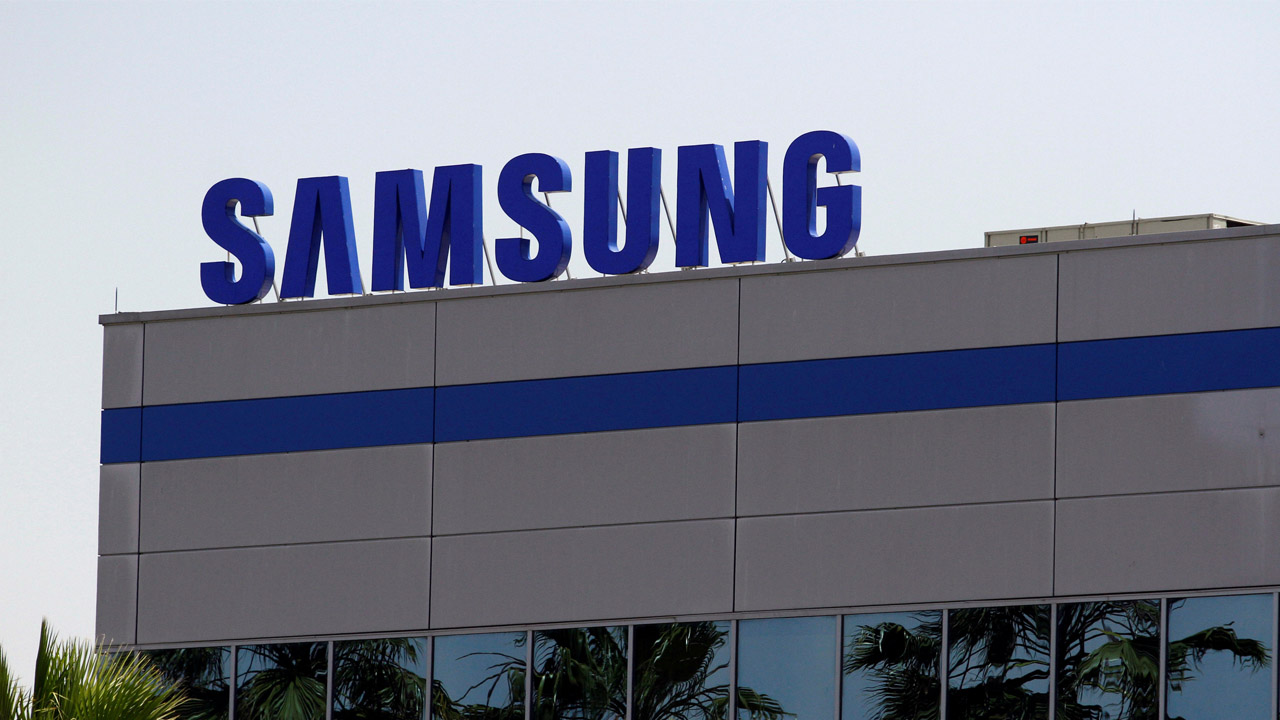Home>Finance>What Capital Structure Policy Would You Recommend For CPK?


Finance
What Capital Structure Policy Would You Recommend For CPK?
Modified: February 21, 2024
Explore the ideal capital structure policy for CPK, combining finance strategies and recommendations to optimize their financial position and maximize profitability.
(Many of the links in this article redirect to a specific reviewed product. Your purchase of these products through affiliate links helps to generate commission for LiveWell, at no extra cost. Learn more)
Table of Contents
Introduction
Welcome to this comprehensive guide on capital structure policy recommendations for CPK. As a leading expert in the field of finance, I understand the crucial role that capital structure plays in the success of a company.
CPK, short for California Pizza Kitchen, is a well-known restaurant chain renowned for its wide variety of delicious pizzas and Italian-inspired dishes. With a strong presence in the United States and several international markets, CPK has witnessed significant growth over the years.
In the constantly evolving and competitive world of business, it is essential for companies like CPK to have a well-defined capital structure policy. Capital structure refers to the mix of debt and equity financing that a company uses to fund its operations and growth. Having an optimal capital structure policy allows a company to balance risk, minimize costs, and maximize shareholder value.
With the importance of capital structure policy in mind, this article will delve into the factors to consider when recommending a capital structure policy for CPK. By carefully assessing CPK’s financial position, market conditions, and growth prospects, we can arrive at an optimal financing mix for the company.
So, let’s explore the various components that come into play when determining the most suitable capital structure policy for CPK. By the end of this article, you will have a clear understanding of the factors to consider and be better equipped to make informed decisions regarding capital structure recommendations for CPK.
Overview of CPK
California Pizza Kitchen (CPK) is a well-established restaurant chain that specializes in innovative and delectable pizzas, as well as a range of other dishes inspired by global cuisine. Founded in 1985 in Beverly Hills, CPK has expanded rapidly and now operates over 200 locations worldwide.
What sets CPK apart from other pizza chains is its commitment to fresh, high-quality ingredients and its unique flavor combinations. From its famous Original BBQ Chicken Pizza to inventive creations like Thai Chicken Pizza, CPK has captured the hearts (and taste buds) of countless customers.
In addition to its diverse menu, CPK prides itself on creating a welcoming and vibrant dining experience. With its trendy and contemporary atmosphere, CPK attracts a broad customer base that ranges from families and couples to young professionals and pizza enthusiasts.
Over the years, CPK has continued to evolve and adapt to changing consumer preferences. The company has expanded its menu to offer gluten-free and vegetarian options to cater to a wider range of dietary needs. Furthermore, CPK has embraced technology and introduced online ordering and delivery services to enhance convenience for its customers.
One of CPK’s key strengths lies in its strong brand recognition and customer loyalty. The company’s reputation for high-quality food, excellent service, and consistent dining experiences has helped it carve out a significant market share in the highly competitive restaurant industry.
Financially, CPK has demonstrated stable performance and steady growth. Despite facing challenges in recent years due to the impact of the COVID-19 pandemic on the restaurant industry, CPK has shown resilience and adaptability. The company has implemented strategies to strengthen its online presence and expand its off-premise dining options, which have helped mitigate the effects of the pandemic.
Overall, CPK stands as a well-established and successful restaurant chain with a strong brand presence and a loyal customer base. As we delve into the intricacies of capital structure policy recommendations for CPK, it is important to consider the company’s unique attributes and market position to formulate the most suitable financing mix.
Importance of Capital Structure Policy
The capital structure policy of a company plays a vital role in shaping its financial health and long-term sustainability. It determines the mix of debt and equity financing a company uses to fund its operations and investments. Here are a few key reasons why capital structure policy is important:
- Optimal Use of Financial Resources: A well-crafted capital structure policy ensures that a company utilizes its financial resources efficiently. By striking the right balance between debt and equity, a company can minimize the cost of capital and maximize its return on investment.
- Risk Management: Capital structure policy helps in managing financial risk. By diversifying the sources of financing, a company can reduce its reliance on a single funding avenue and mitigate the potential impact of economic downturns or unexpected market fluctuations. This provides stability and resilience to the company’s operations.
- Flexibility and Adaptability: A robust capital structure policy allows a company to adapt to changing market conditions and business needs. By having access to multiple funding options, such as loans, bonds, equity offerings, or retained earnings, a company can respond swiftly to growth opportunities, acquisitions, or investments.
- Shareholder Value: Capital structure policy has a direct impact on shareholder value. By optimizing the mix of debt and equity, a company can enhance its financial performance, profitability, and ultimately increase shareholder returns.
- Creditworthiness: A well-defined capital structure policy helps establish a company’s creditworthiness in the eyes of lenders and investors. Maintaining a healthy balance between debt and equity indicates disciplined financial management and instills confidence in external stakeholders.
For CPK, a clear and effective capital structure policy is crucial for its continued growth and success. As the company seeks to expand its operations, invest in new technologies, and adapt to changing consumer preferences, having an optimal financing mix will provide the necessary financial stability and flexibility to achieve these goals.
In the following sections, we will explore the factors that need to be considered when recommending a capital structure policy for CPK. By evaluating the company’s financial position, market conditions, and growth prospects, we can formulate a capital structure policy that aligns with CPK’s strategic objectives and enhances its long-term value creation.
Factors to Consider in Recommending Capital Structure Policy for CPK
When recommending a capital structure policy for CPK, several key factors need to be considered. These factors encompass both internal and external influences that impact the company’s financial position and growth prospects. By taking these factors into account, we can arrive at a prudent and effective capital structure policy for CPK. Let’s explore some of these factors in detail:
- Financial Health and Performance: The first and foremost factor to assess is CPK’s current financial health and performance. This includes analyzing its revenue growth, profitability, cash flow, and debt level. A company with strong financials and consistent cash flow may have more flexibility to leverage debt financing.
- Industry and Market Conditions: CPK operates in the highly competitive restaurant industry, which is affected by various factors such as consumer trends, market saturation, and economic conditions. Understanding the industry dynamics and market conditions is crucial in determining the appropriate capital structure policy for CPK.
- Growth Opportunities and Expansion Plans: CPK’s growth prospects and expansion plans play a significant role in recommending its capital structure policy. If the company intends to open new locations, invest in new technology, or enter new markets, it may require additional funding that can be obtained through debt or equity financing.
- Cost of Capital: Evaluating the cost of different sources of capital is essential. Debt financing usually offers a lower cost of capital due to tax advantages, while equity financing may dilute ownership but come with fewer financial obligations. Balancing the cost and benefits of each option is critical in determining an optimal capital structure policy.
- Risk Tolerance: CPK’s risk tolerance is an important consideration in capital structure decisions. Higher levels of debt increase financial risk due to interest obligations and potential default. Assessing the company’s ability to manage and service debt is crucial in recommending a capital structure that aligns with its risk tolerance.
- Investor Preferences: Understanding the preferences of CPK’s current and potential investors is crucial. Some investors may prefer a higher proportion of equity, while others may be more inclined towards debt. Considering the investor base and their requirements can help design a capital structure policy that attracts and retains investors.
By thoroughly analyzing these factors, we can develop a capital structure policy for CPK that optimizes its financial resources, minimizes risk, and supports its growth objectives. The next sections will explore the two primary avenues of capital structure – debt financing and equity financing – and their implications for CPK’s financial strategy.
Debt Financing
Debt financing involves raising capital by borrowing funds from external sources such as banks, financial institutions, or issuing corporate bonds. It is a popular option for companies like CPK looking to obtain funds for operational expenses, investments, or expansion plans. Here are some important considerations regarding debt financing for CPK:
Interest Rates and Costs: One key factor in debt financing is the prevailing interest rates. CPK needs to evaluate whether it can secure loans at favorable rates that align with its ability to generate sufficient cash flows to cover interest payments. Additionally, assessing other costs associated with debt financing, such as loan origination fees or covenant requirements, is crucial in determining the feasibility of this financing avenue.
Debt Capacity and Risk: CPK’s debt capacity is the maximum amount of debt it can reasonably handle without jeopardizing its financial stability and ability to meet obligations. By analyzing factors such as cash flow, profitability, and debt-to-equity ratio, CPK can determine an appropriate level of debt that allows for efficient operations and avoids excessive financial risk.
Tax Implications: Interest payments made on debt are generally tax-deductible, which can provide CPK with a tax shield, reducing its overall tax liability. This makes debt financing an attractive option from a tax perspective. However, it is important to consider any potential restrictions or limitations on interest deductibility imposed by tax laws or loan agreements.
Collateral and Security: In some cases, lenders may require CPK to provide collateral or security for the loans. Collateral can include assets such as real estate, equipment, or intellectual property rights. CPK needs to assess its asset base and determine if it can comfortably offer collateral without impairing its ability to operate or restricting future growth opportunities.
Debt Maturity: The maturity period of loans is another crucial factor to consider. CPK needs to evaluate the ideal loan duration based on its operational and cash flow requirements. Shorter-term loans may offer flexibility but could involve higher interest rates, while longer-term loans provide stability but restrict the company’s ability to take on additional debt or adapt to changing market conditions.
Debt financing can provide CPK with the necessary capital to support its growth aspirations, invest in technology, and expand its operations. However, it is important to strike a balance between debt utilization and financial risk. By carefully considering the various factors related to debt financing, CPK can devise a capital structure policy that includes an optimal debt component.
Equity Financing
Equity financing involves raising capital by issuing shares of ownership in the company to investors in exchange for funds. It is a vital avenue for companies like CPK to raise capital without incurring debt obligations. Here are some key considerations regarding equity financing for CPK:
Ownership and Control: When CPK opts for equity financing, it offers ownership stakes in the company to investors. This can dilute existing shareholders’ ownership, including the founders and early investors. CPK needs to assess the level of control it is willing to relinquish and ensure that it still maintains strategic decision-making abilities.
Shareholder Expectations: With equity financing, CPK takes on the responsibility of meeting the expectations and demands of shareholders. Shareholders may have different objectives and timelines for their investments, and CPK needs to ensure it can deliver sustainable growth and generate returns that satisfy its investors.
Capital Infusion: Equity financing can provide CPK with a significant capital infusion to fund its expansion plans and other strategic initiatives. This fresh capital can be used for new restaurant openings, technological advancements, marketing campaigns, or debt reduction, thereby strengthening the company’s financial position.
Market Conditions: The current market conditions and investor sentiment play a crucial role in the success of equity financing. An optimistic market can facilitate a higher valuation and increased demand for CPK’s shares, while a downturn may make it more challenging to attract investors. CPK needs to carefully assess the timing and market conditions to optimize its equity financing endeavors.
Dividend Obligations: By issuing equity, CPK may be required to distribute dividends to shareholders if the company generates profits. This can be a potential ongoing financial obligation for CPK. It must evaluate its ability to consistently generate profits and cash flows to meet these dividend obligations without jeopardizing its operational needs.
Investor Relationships: Equity financing establishes long-term relationships with investors who become stakeholders in the company’s success. Nurturing these relationships and providing transparency in corporate governance are essential to maintaining investor trust and ensuring ongoing support for CPK’s growth plans.
Equity financing offers CPK the opportunity to raise capital without incurring debt and interest payments. By considering these key factors related to equity financing, CPK can determine the optimal balance between debt and equity in its capital structure to support its growth objectives and create long-term value for its investors.
Optimal Capital Structure Policy for CPK
After carefully evaluating the factors discussed earlier and considering CPK’s unique circumstances, it is time to recommend an optimal capital structure policy for the company. The goal is to strike a balance between debt and equity financing to ensure financial stability, flexibility, and long-term value creation. Here are some key considerations for CPK’s optimal capital structure policy:
Weighted Average Cost of Capital (WACC): CPK should aim to achieve an optimal WACC, which represents the average cost of both debt and equity financing. By balancing the costs and benefits of debt and equity, CPK can determine the funding mix that minimizes the WACC and maximizes shareholder value.
Debt-to-Equity Ratio: CPK needs to determine a suitable debt-to-equity ratio that aligns with its risk tolerance and growth aspirations. A higher debt-to-equity ratio increases financial leverage but also carries higher financial risk. CPK should strike a balance that enables efficient operations and access to growth capital while maintaining a stable financial position.
Financial Stability: Ensuring CPK’s financial stability is crucial when devising its capital structure policy. The company should be able to comfortably service its debt obligations and maintain sufficient cash flows to support its operations and growth initiatives. It should avoid overleveraging that could jeopardize its ability to react to market uncertainties or unforeseen challenges.
Growth Objectives: CPK’s capital structure policy should support its growth objectives. If the company has ambitious expansion plans or intends to invest heavily in innovation and technology, it might require additional funding through debt or equity financing. The capital structure should provide CPK with the flexibility to pursue growth opportunities effectively.
Investor Preferences: Understanding the preferences of CPK’s investor base is critical. If the company has a substantial number of equity-oriented investors, it may be wise to maintain a higher equity component in the capital structure to align with their expectations. Regular communication with investors can ensure their support for CPK’s capital structure decisions.
Market Conditions: CPK should consider the prevailing market conditions and investor sentiment when determining its capital structure policy. This includes evaluating interest rates, the overall state of the economy, and the level of investor demand for debt or equity. Timely capital market assessments can optimize the financing options available to CPK.
Ultimately, the optimal capital structure policy for CPK will be unique to the company’s circumstances and strategic priorities. It should provide the financial stability needed to weather economic fluctuations while allowing for flexibility and growth. Regular monitoring and evaluation of the capital structure will help CPK adapt to changing market dynamics and maintain its competitive edge.
Conclusion
In conclusion, recommending an optimal capital structure policy for CPK involves a careful assessment of various factors that influence the company’s financial position, growth prospects, and risk tolerance. By striking the right balance between debt and equity financing, CPK can achieve financial stability, flexibility, and long-term value creation.
CPK, a renowned restaurant chain, has established itself as a leader in the industry with its diverse menu, commitment to quality, and strong brand presence. When formulating the capital structure policy for CPK, it is essential to consider factors such as its financial health, industry and market conditions, growth opportunities, cost of capital, risk tolerance, and investor preferences.
Debt financing offers CPK access to capital through loans or bonds, providing funds for operational expenses, investments, and expansion. With careful consideration of interest rates, debt capacity, tax implications, collateral requirements, and debt maturity, CPK can leverage this avenue effectively.
Equity financing, on the other hand, involves issuing shares to investors in exchange for capital. Equity financing allows CPK to raise funds without incurring debt obligations, but it requires careful evaluation of ownership and control, shareholder expectations, capital infusion capabilities, market conditions, dividend obligations, and investor relationship management.
To determine the optimal capital structure policy, CPK must strike a balance between debt and equity financing, considering factors such as the weighted average cost of capital, debt-to-equity ratio, financial stability, growth objectives, investor preferences, and prevailing market conditions. By doing so, CPK can ensure efficient capital utilization, risk management, and alignment with its long-term strategic goals.
In the dynamic and competitive landscape of the restaurant industry, CPK’s capital structure policy plays a crucial role in its ability to stay resilient, seize growth opportunities, and deliver value to its shareholders. Regular evaluation and adjustment of the capital structure policy will allow CPK to adapt to changing market conditions, achieve sustainable growth, and maintain its position as a leader in the industry.














